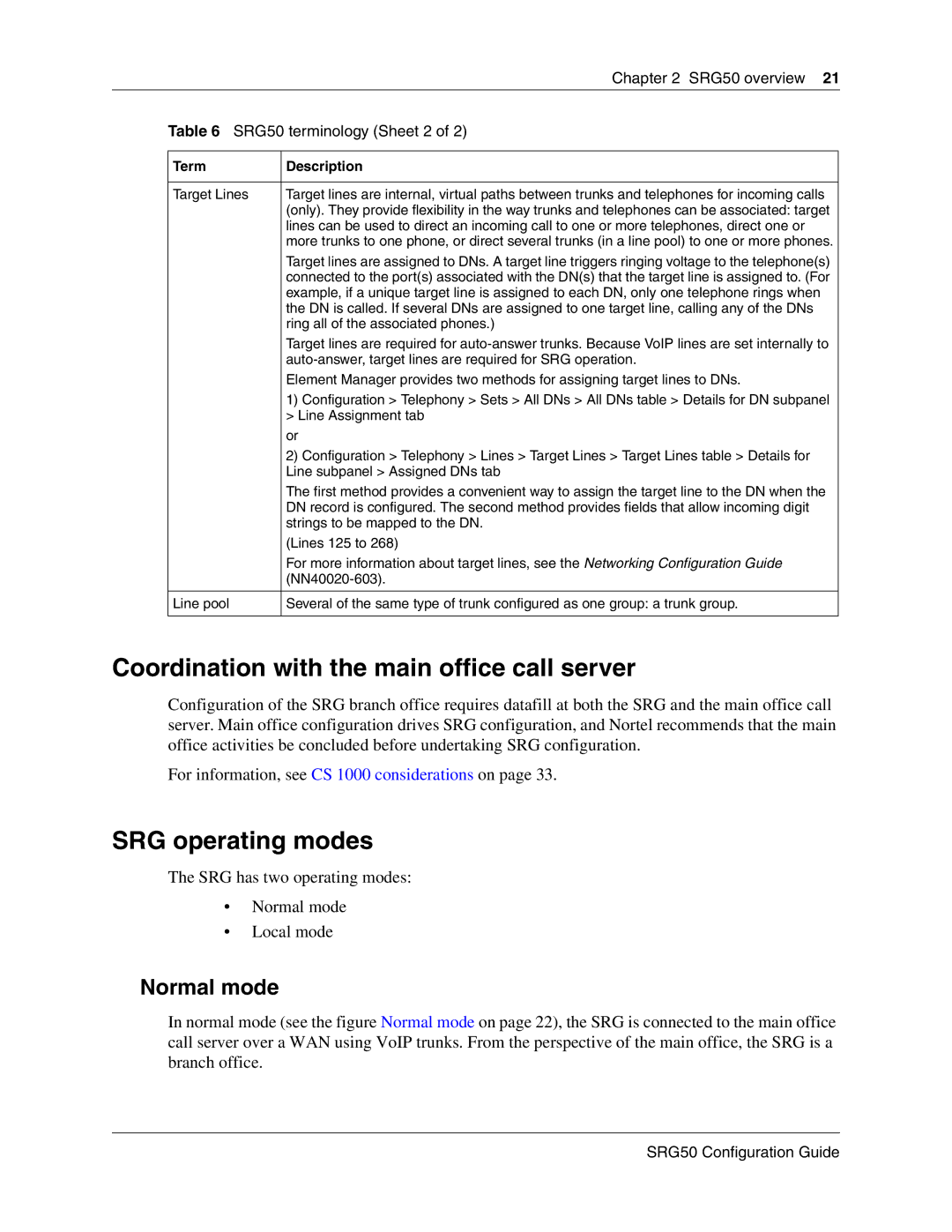
Chapter 2 SRG50 overview 21
Table 6 SRG50 terminology (Sheet 2 of 2)
Term | Description |
|
|
Target Lines | Target lines are internal, virtual paths between trunks and telephones for incoming calls |
| (only). They provide flexibility in the way trunks and telephones can be associated: target |
| lines can be used to direct an incoming call to one or more telephones, direct one or |
| more trunks to one phone, or direct several trunks (in a line pool) to one or more phones. |
| Target lines are assigned to DNs. A target line triggers ringing voltage to the telephone(s) |
| connected to the port(s) associated with the DN(s) that the target line is assigned to. (For |
| example, if a unique target line is assigned to each DN, only one telephone rings when |
| the DN is called. If several DNs are assigned to one target line, calling any of the DNs |
| ring all of the associated phones.) |
| Target lines are required for |
| |
| Element Manager provides two methods for assigning target lines to DNs. |
| 1) Configuration > Telephony > Sets > All DNs > All DNs table > Details for DN subpanel |
| > Line Assignment tab |
| or |
| 2) Configuration > Telephony > Lines > Target Lines > Target Lines table > Details for |
| Line subpanel > Assigned DNs tab |
| The first method provides a convenient way to assign the target line to the DN when the |
| DN record is configured. The second method provides fields that allow incoming digit |
| strings to be mapped to the DN. |
| (Lines 125 to 268) |
| For more information about target lines, see the Networking Configuration Guide |
| |
|
|
Line pool | Several of the same type of trunk configured as one group: a trunk group. |
|
|
Coordination with the main office call server
Configuration of the SRG branch office requires datafill at both the SRG and the main office call server. Main office configuration drives SRG configuration, and Nortel recommends that the main office activities be concluded before undertaking SRG configuration.
For information, see CS 1000 considerations on page 33.
SRG operating modes
The SRG has two operating modes:
•Normal mode
•Local mode
Normal mode
In normal mode (see the figure Normal mode on page 22), the SRG is connected to the main office call server over a WAN using VoIP trunks. From the perspective of the main office, the SRG is a branch office.
